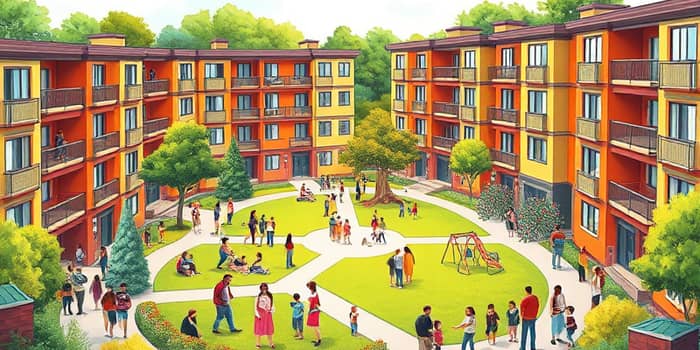
The shortage of quality, affordable homes has become a defining challenge for communities across the United States. While economic fluctuations and complex regulations complicate solutions, strategic investments can spark transformation. This article explores how capital deployed into affordable housing not only yields financial returns but also fosters thriving neighborhoods.
The affordable housing gap is staggering. An estimated 7.1 million homes needed for extremely low-income renters remains unmet, translating to only 35 available units for every 100 such households. That imbalance drives overcrowding, cost burdens, and instability.
Despite rising demand, affordable units represent just 7.7% of total multifamily investment volume in the first half of 2023—up from a 3.6% historical average but still far below necessity. Addressing this shortfall requires coordinated action and substantial capital.
Recent years have witnessed growing interest from both public and private investors. In 2024, IMPACT Community Capital mobilized $307 million to finance over 4,700 affordable units nationwide, reinforcing stable long-term returns while addressing urgent social needs.
Across the sector, private investment vehicles have raised $18.4 billion over five years ending September 2024, earmarked for new developments and preservation efforts. Historically, affordable housing has delivered an average 4.8% income return since 2011, with private equity funds targeting leveraged cash-on-cash returns of 5% to 7%.
Affordable housing investments extend far beyond brick and mortar. They underpin essential social services, bolster economic mobility, and cultivate cohesive neighborhoods.
By reducing cost burdens, families can redirect resources to education, healthcare, and savings, reinforcing resilience against external shocks.
Even amid recessions, affordable housing maintains stability. Subsidized rents and housing credits insulate cash flows from broader market volatility. As incomes stagnate, the demand for well-managed, cost-effective housing typically surges, protecting investor returns and ensuring occupancy levels remain high.
This countercyclical character distinguishes affordable housing from other real estate sectors. For communities, it means reliable access to shelter when it is needed most.
Operational success requires navigating a complex regulatory environment. Tax credits, zoning rules, and funding eligibility vary across jurisdictions, placing a premium on operationally efficient owners and operators who can align compliance with development timelines.
Looking ahead, state and local governments are exploring innovative financing tools, such as housing bonds and public-private partnerships, to mitigate federal shortfalls and sustain progress.
Affordable housing appeals to a broad array of capital sources. Banks, pension funds, insurance companies, endowments, foundations, high-net-worth individuals, and family offices all allocate resources to this asset class.
Heightened attention to environmental, social, and governance (ESG) objectives has propelled it to the forefront of many portfolios. Investors recognize the positive social and economic impact possible when housing stability underpins health, education, and workforce participation.
The need for affordable housing is undeniable and growing. With 7.1 million homes required for extremely low-income renters and limited supply, the opportunity for transformative investment has never been greater.
By channeling capital into thoughtful developments, leveraging tax incentives effectively, and partnering with community organizations, investors can achieve socially conscious investment strategies that yield stable returns and foster inclusive communities. The future of housing will hinge on our collective ability to innovate, collaborate, and commit resources where they can create lasting change.
Together, we can ensure that affordable housing remains a cornerstone of vibrant, resilient neighborhoods—a testament to what happens when investment meets purpose.
References













